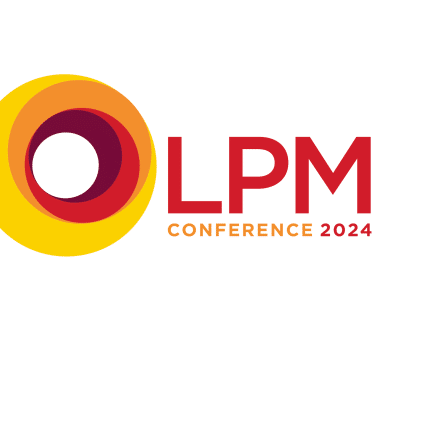
Why you need a CRM now
A client relationship management (CRM) tool can help firms centralise revenue-generating relationships that may otherwise be recorded in spreadsheets or even on paper, shared across different departments. Leaders from Higgs, Paris Smith and Bolt Burdon Kemp offer their perspectives
Building and maintaining strong client relationships is a key success metric in the legal industry. According to Thomson Reuters’ 2023 State of the UK Legal Market report, nearly half of UK legal buyers changed the law firms they bought from last year, citing their relationships with lawyers and law firms as one of the main reasons. To mitigate the risk of losing existing clients, firms need to be mindful of strengthening their client relationships.
There’s also an opportunity to be gained by attracting clients who have stopped working with other firms. A client relationship management (CRM) tool can help firms to centralise revenue-generating relationships that may otherwise be recorded in spreadsheets or even on paper, shared across different departments. It enables firm-wide visibility into various interactions with clients, which can inform decisions about future contact, helping firms to keep their relationships warm and identify the best prospects.
However, busy lawyers often don’t record potentially useful data — such as new contacts made during networking events — in the CRM, which may lead to the firm losing out on new clients or referrers. It also won’t be able to identify whether anyone in the firm already knows a key person – nor the strength of the connection.
With this in mind and having reaffirmed the firm’s purpose (forging long-term relationships with families and businesses since 1875), leaders at Higgs link the firm’s success to the relationships it has cultivated over the years. Implementing a CRM last year was an obvious progression to manage its relationships in a more coordinated way. Backed by senior leadership who strongly believed in the idea, the firm gained the traction it needed to embark on a CRM deployment journey around two years ago.
Removing frictions
The team at Higgs identified an open-source CRM, which they’ve incorporated in a way they believe is different — by using lawyers’ time-recording behaviours in the practice management system (PMS) to generate transactions in the CRM. This means lawyers can work comfortably within their native environment. When they meet with a client, they can simply record a relationship interaction with a specific ‘time type’ such as activity, keynotes, feedback or even an opportunity they’ve identified during that conversation — these records are then automatically transferred into the CRM, providing a holistic view of where any client relationship stands.
Glyn Morris, partner at Higgs, says: “We used our intuition and skillsets to make the process completely aligned with the lawyer’s worldview and our existing practice management system.”
All data the firm collects is then presented with Power BI (a Microsoft data visualisation software, now called Fabric) dashboards located in the CRM — providing a clear visual of the individual components of each relationship.
Having such an overarching view required the firm to rethink how it grouped clients and assigned responsibility for relationships to relationship managers, each of whom manually went through their client lists and refined contacts and contact details. Morris also explains that the process is almost fully integrated end to end, beginning when a target client is identified through to becoming a long-term relationship client. He says that when a new client, opportunity or relationship emerges, it starts in the CRM system. When it becomes an actual instruction from a client, a file is opened via the client matter inception software, and then that data goes into the PMS. The PMS then loops back to update the CRM and complete the cycle.
“We capture what’s going on in the business by time recording source data, maintaining key data in one source, and feeding into another for visibility and access. There’s been a mindset shift for lawyers who would ordinarily manage relationships in an ad-hoc manner on spreadsheets or paper. We’re eliminating all of that to bring it together into a firm-wide approach,” Morris adds.
Higgs’ purpose extends not only to valuing its client relationships but also its business partners, which the Thomson Reuters report also suggests is vital to building a firm’s brand. The firm continually works to strengthen those bonds — now enabled by its CRM to track and manage a spectrum of business relationships more closely.
Sue Murphy, practice and business development director at Paris Smith, says her firm has long-standing relationships with many clients, referrers and the various charities it supports. Although Paris Smith doesn’t use a CRM yet, Murphy — who previously spent 20 years in a tech-friendly law and built several herself — is planning to implement one within two years.
The firm’s PMS can assemble mailing lists but does not track relationships like a CRM. Murphy says: “You should be able to report on parent companies, their subsidiaries, how people are linked and who knows who, which we currently record manually. A PMS will tell you how many files you’ve opened and how much time you’ve spent on a matter. But the actual goodwill of a law firm is contained within the information in a CRM system.”
But she says there’s a caveat to implementing a CRM system effectively — having the right processes in place first. “You have to get people used to recording who they’ve met at networking events or who they’ve bumped into — basically, everyone they interact with — before bringing a system on board.”
Murphy has decided to deploy a data-scraping tool that can mine content data from Outlook in the first stage of her CRM implementation plan. This will help them better understand the firm’s current situation and identify a suitable CRM system for its needs.
Developing prospects
A CRM can also be a very good tool for identifying and tracking others the firm may want to work with based on existing or former client relationships or through third-party referrals such as from accountancy firms. Paris Smith, for instance, has many landowner clients who are diversifying into buying farms. CRM software can help the firm track its relationships with these clients and reach out to other prospective clients in the agricultural sector, showcasing its expertise.
CRM systems may not be for every SME law firm, however. Sonita Hayward, senior associate and Head of Public Affairs at Bolt Burdon Kemp, a serious injury law firm that doesn’t use a CRM, says she doesn’t believe she can draw learnings from this tool to help the firm attract new clients because injury doesn’t discriminate. The firm doesn’t target a specific demographic because the only factor that unifies its clients is that “they’ve experienced a serious injury, whether that’s physical or mental injury”. Hayward says the firm relies on its digital visibility and its lawyers, who are active on LinkedIn and produce thought leadership pieces regularly, to attract clients. In addition, the firm actively engages with its clients and referrers by meeting them face-to-face regularly and maintaining “close, genuine relationships.”
Nonetheless, in an increasingly commoditised legal sector, amplifying client relationships — and, indeed, commitment to effective client listening and understanding – are clearly important for many as they prove to be a key differentiator to cut through a lot that legal businesses still have in common. And a CRM tool — when implemented and used effectively — can support the process of strengthening those relationships.



